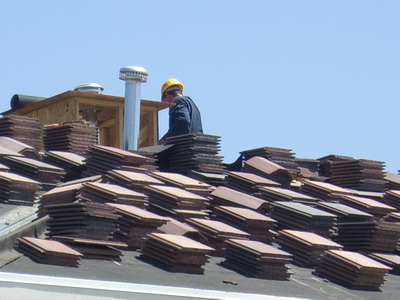 |

Fiberglass roofing was first introduced in 1938 as an innovative roofing material, and his since grown in popularity. Being synthetically produced from fine glass fibers, fiberglass roofing offers flexibility, malleability, and versatility, so that it can be catered and matched to almost any roofing type and appearance. Fiberglass roofing is usually used as roofing and siding panels, yet can also be bought in sheets for full sheathing purposes.
Fiberglass roofing is glazed to provide a superior waterproofing seal, and fiberglass roofing panels provide a tough and durable membrane to the roof structure. Available in a plethora of colors, sizes, and designs, fiberglass roofing is easy to install, lightweight, and highly durable, which means inexpensive installation and low maintenance requirements. Fiberglass roofing panels are also significantly cheaper than other roof panel materials (about 65-70%), and yet will last about 30 years with minimal maintenance.
Additionally, fiberglass roofing is highly resistant to corrosion and chemicals, and do not rust, rot, or mildew, and are shatterproof. Depending on the kind you choose, a fiberglass roofing panel can be highly beneficial to you and your roof. Roof 101 offers fiberglass roofing installation, repair, cleaning and maintenance services for both residential and commercial applications, and would be happy to advise you on the best suited fiberglass roofing for your house or office space.
 |  |  |
Corrugated fiberglass roofing and panels are the ultimate choice for roofing projects requiring high tensile strength. Corrugated fiberglass roofing can be purchased in heavy duty form, allowing it to withstand high winds, heavy snow, and extreme outdoor temperatures. The corrugation gives way to interlocking between sheets, and good water run-off. The corrugated fiberglass roofing price will vary greatly depending on size, strength, style, and more, so consult with your local Roof 101 contractor for more details.
How to replace a roof is a two step process that will strongly depend upon the kind of roof you own. There are many kinds of damage that can occur, including holes, leaks, rust, decomposition, discoloring, tearing, and more.

|